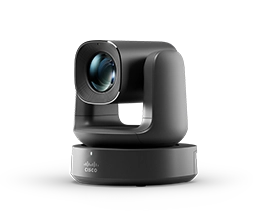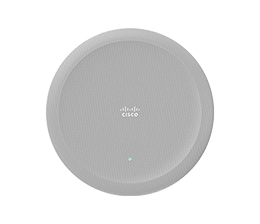Table of contents
From social media to video conferencing and everywhere in between, today’s digital-first consumers are interacting with brands in more ways than one. In turn, leveraging an omnichannel contact center solution has never been more important.
But what is omnichannel communication, and why should it matter to your contact center? Let’s combine the two and discover all there is to know about omnichannel contact center solutions.
What is an omnichannel contact center?
Omnichannel contact centers integrate multiple communication channels into one unified interface, allowing organizations to synchronize the customer experience across all of them simultaneously. Rather than the siloed approach most businesses have used for decades, the omnichannel strategy delivers a consistent experience regardless of where or how any individual customer interaction occurs.
An omnichannel contact center bridges every communication channel, creating one comprehensive hub. Organizations use omnichannel contact centers to manage customer engagement at scale instead of handling each interaction on its own independent channel.
Although often used interchangeably, contact centers and call centers are notably different terms. Call centers, as the name implies, focus exclusively on telephony—interactions that happen over a phone call. Contact centers are far more inclusive. For example, they not only cover phone call conversations but may also manage interactions that occur over social media, SMS, or any other digital channel.
Using contact center software, these pieces combine to form a single source of truth for organizations and their customer success teams.
Omnichannel vs. multichannel contact center solutions
Contact center software comes in various shapes and sizes. Omnichannel and multichannel contact center solutions are just two of the six main types, but they’re often discussed in comparison because of how heavily they overlap.
Both options support multiple communication channels, including:
Video conferencing
Telephone
Text messaging
Social media
Live chat
Email
The key difference? A multichannel contact center can service numerous touchpoints that aren’t necessarily integrated. In other words, a customer engagement that begins on one communication channel won’t seamlessly carry over to the next.
An omnichannel customer journey is much different. Because it synchronizes multiple channels, people don’t have to repeat themselves when jumping from one touch point to another. For example, a customer inquiry may begin via email, but because the problem is too complex, it elevates to a phone call. In this case, the customer service agent retains all relevant information without asking frustrating, repetitive questions.
Why is omnichannel communication important?
According to McKinsey, modern consumers use three to five channels to interact with brands. The average person attempting to book an online reservation switches between websites and mobile channels nearly six times before finalizing their request.
But the real challenge? 86% of people expect conversations to flow seamlessly between channels. Simply put, engagements are happening in more ways than ever before, and consumers increasingly want agents to retain information from one to the next.
Fortunately, omnichannel communication can solve this problem. With the right contact center solution, organizations can deliver a consistent and personalized experience at any point in the customer journey.
Example of omnichannel customer service
Imagine someone is having difficulties setting up a mobile device. They need help, so they visit the company’s website to troubleshoot the issue.
The customer interaction starts with a live chat on the website. After explaining their problem, it becomes clear that it's too complex and requires human intervention. Therefore, the issue is escalated to a real customer service agent who addresses it over the telephone.
In a contact center with multiple communication channels, agents often have to repeat customer information to the chatbot. However, in an omnichannel solution, all the context and data the customer provides are carried over to the agent, making it possible for them to address the issue without interruption or repetition.
71% of consumers expect personalized experiences, and 76% are frustrated when brands don’t deliver. Fortunately, omnichannel solutions provide a holistic view of each customer, allowing teams to tailor any engagement across the entire customer journey.
Benefits of the omnichannel strategy
Considering its vast advantages, building a business case for omnichannel contact center software is easy. Here are some of the benefits you can expect from the right solution:
Faster customer support outcomes
Leveraging an omnichannel contact center solution means empowering agents to quickly access critical information. Customer data—sales histories, call transcripts, behavioral analytics, and so on—is available at a moment’s notice in one source of truth.
Furthermore, organizations can leverage this data to determine which agents are most suitable for each customer inquiry. This guarantees that customers will be connected to an agent during their initial contact, leading to a significant reduction in resolution time. When paired with advanced routing capabilities, these resources result in a substantial improvement in customer satisfaction.
Greater customer retention
Customer loyalty is key, but frustrating experiences can fracture relationships and send fans packing.
The good news? Organizations that implement an omnichannel strategy see 90% higher customer retention rates. Better yet, consumers who receive an omnichannel experience spend up to 13% more than those who don’t.
In short, better customer engagement translates into repeat business—and, with that, greater lifetime value. Omnichannel contact center software allows people to communicate on any traditional or digital channel they prefer. Additionally, it reduces repetition, decreases hold times, and makes for a smoother, more positive customer experience.
Improved agent productivity
An important advantage that shouldn’t be overlooked is the impact omnichannel contact centers have on the workforce. Rather than forcing agents to jump through hoops and toggle between different platforms, an omnichannel solution provides everything they need in one place.
They have just one dashboard to manage calls, cases, and tickets, which means they don’t have to spend time learning disparate systems. Moreover, they can instantly access customer data and other resources in real time, helping them resolve issues faster. The best part? This not only boosts agent productivity but also makes their job easier, helping to avoid burnout and reduce agent attrition.
Stronger data activation
Did you know that data-driven organizations experience above-market growth and can even increase earnings by up to 25%?
It’s true, but extracting value from operational and customer data isn’t easy. Many businesses struggle to leverage business intelligence because of their siloed systems, which prevent cross-departmental teams from using it to their advantage.
Omnichannel contact center software breaks down these barriers and helps data flow seamlessly between customer relationship management (CRM) tools and other critical platforms. Analytics can be used for numerous purposes, such as improving the customer experience, enhancing agent performance, identifying inefficiencies, or designing innovative solutions to key business problems.
Choosing an omnichannel contact center solution
Deciding on contact center software is one of an organization's most important choices. Here are the key capabilities you should keep in mind when searching for the right solution:
1. Centralized and cloud-based management
Any contact center solution that markets itself as an omnichannel product must offer a centralized dashboard—otherwise, it’s not truly omnichannel. In other words, look for a platform that provides a unified knowledge base with direct access to customer data analytics.
The exact data points you require will vary depending on business priorities. But the following examples are must-haves for any contact center:
Customer information: Name, location, contact details, open tickets, and other info that might help personalize the customer experience.
Historical data: This could include a list of past conversations, live chat transcripts, and how these cases ended.
Real-time customer behavior: Recently viewed webpages, resources, or features that might add context to the engagement.
Customer success metrics: Any data that indicates customer satisfaction, such as net promoter score, lifetime value, or survey results.
Another aspect of user experience is how your software is deployed. For this, it’s best to use a cloud contact center solution. Traditional on-premise tools may still work but require expensive installation and continuous maintenance. Cloud-based tools need only an internet connection, which is key if you support a hybrid workforce. Plus, they’re faster to deploy and can scale as your needs change.
Moreover, cloud contact center software is more resilient against sudden bandwidth or inbound call volume surges. As a highly reliable option, this means service disruptions are less likely to happen in the middle of a customer conversation.
2. Frictionless integration with key business systems
Today's enterprises use various business applications such as CRM, marketing automation, and communications. However, these tools are often not integrated, leading to fragmented customer data and hindering operational performance.
API integrations are key to breaking down silos that inhibit cross-departmental collaboration. They also ensure that your preferred CRM and business applications are accessible to all contact center agents whenever they need them.
For example, connecting inventory management systems can help agents know if products are out of stock, avoiding miscommunications and costly mistakes.
3. Built-in artificial intelligence (AI)
Generative and conversational AI may be hot topics recently, but the truth is leading contact center solutions have been tapping into innovative tools for years.
Take virtual agents, for example. Interactive voice response (IVR) systems and chatbots use contact center AI to simplify customer communication while providing fast and easy self-service options. For digital-first consumers, this means they don’t have to talk to an agent if they don’t want to. But, if their inquiry needs more attention, they can seamlessly elevate the conversation to a real-life agent without losing context.
Plus, self-service tools improve first-contact resolution, which means agents don’t have to spend as much time on repetitive tasks. Virtual agents have it covered so they can focus on more important, complex issues.
Top contact center vendors go a step further with speech analytics and sentiment analysis. Using natural language processing, AI analyzes the customer’s voice and tone to grade it as positive, neutral, or negative. Combined with automated transcription, this provides a valuable resource for agents and managers to better understand how customers felt during the interaction.
4. Automatic Call Distribution (ACD)
Intelligent case distribution is a great feature for improving agent productivity and operational efficiency. Rather than randomly routing inbound calls, ACD and IVR match them to particular teams or individual agents based on adjustable criteria, such as skill or availability.
For example, skills-based routing enables you to optimize routing strategies more granularly. Managers rate each employee’s proficiencies and use this data to automatically route calls to the appropriate agent whose skills match the customer inquiry. This streamlines time-to-resolution while evenly distributing cases to your available team.
5. Workforce optimization
It’s a manager’s job to improve customer satisfaction. And one of the best ways to do that? Uplifting agent performance.
Ideally, an omnichannel contact center solution will offer intuitive, easy-to-use dashboards for workforce optimization. From here, managers should be able to instantly view real-time analytics related to agent productivity and generate reports at a moment’s notice. These quality management tools allow them to analyze performance metrics, gather insights, and close the feedback loop with timely and detailed evaluations.
With deep visibility, managers can help agents understand their impact on the customer experience. More importantly, they can identify areas of improvement and arm them with key resources to kickstart their development.
Omnichannel contact center best practices
There are important steps to take when you decide on a cloud contact center solution. Here are a few best practices you need to consider:
Map the customer journey: Because they rarely take a linear path, it’s helpful to map the customer journey from start to finish. Where and when are they likely to engage? What will they be looking for? Answering these questions will help establish customer needs and how to address them.
Identify your top channels: The point of the omnichannel approach is to give customers multiple avenues by which they can reach you, but not all of them are used as frequently. Knowing which ones your audience prefers can help allocate resources and workloads evenly based on historical trends.
Prioritize personalization: Take every opportunity to tailor customer engagement to the individual. A unified platform streamlines information retrieval and makes it easy for agents to do exactly that.
Adjust over time: Pay attention to customer success metrics. This will allow you to quickly and nimbly adapt when customer behavior changes, helping you stay current on preferences, interests, and needs.
Strengthen your knowledge base: Train agents to be their best selves by empowering them with all the tools they need to succeed. From call transcripts and customer data to business applications and real-time analytics, ensure essential resources are at their fingertips.
Adopt the omnichannel approach with Webex Contact Center
As a cloud contact center solution, Webex Contact Center provides all the flexibility and capability you need to enable an omnichannel experience. Our platform offers robust features that enable agents and managers to take their operations to the next level. These include:
AI-powered virtual agents for 24/7 self-service
Workforce optimization and quality management tools
Automatic call distribution with capacity- and skills-based routing
Open APIs and integrations
Real-time and historical data dashboards
Best of all, you can access all these capabilities from just one comprehensive, scalable solution. With true omnichannel support, customers can reach you anywhere and anytime.
Learn more about how Webex Contact Center can elevate your customer experience.







